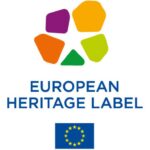HISTORY
The MMM opened its doors in Molenbeek on 12 October 2019, on the occasion of the 50th anniversary of the Foyer asbl. MMM tells the story of immigrant workers, the first arrivals at the Little Castle, expatriates, refugees, Europeans who moved freely within the EU and all the others. It also pays tribute to the many migrants who have helped shape the city. Today, about 180 nationalities live together in Brussels. They form the city.
The museum aims to be:
EMPATHIC
The MigratieMuseumMigration radically opts for the power of personal stories. Memories and photos are in the centre. The warm presentation ignites the visitor’s memory, which in turn can be shared. Thanks to this, the visitor knows that his or her history is recognised as part of the great history of Brussels.
PARTICIPATORY
MMM is for and by the people. This is the result of an intensive process with many Brussels residents. The museum invites the visitor to be part of the adventure by contributing to this colourful installation to become part of the face of Brussels.
INFORMATIVE
Through a timeline, touch screen, MMM Academy and digital information, visitors are given information about the many migrations to Brussels and the emergence of multicultural neighbourhoods.
ACCESSIBLE
The MMM and the municipality of Sint-Jans-Molenbeek have worked together to turn the garden next door into a green zone.
ECOLOGICAL
The MMM attaches particular importance to ecology. We use solar panels and water collectors.
Foundations and Values of the Migratie Museum Migration
1. The MMM chooses to represent the diversity of migration and the inhabitants of Brussels as a whole, while giving more weight to the element of superdiversity than to the number of people in a community.
2. The MMM chooses to adopt a bottom-up approach in organising its collection, starting with the people of Brussels, the inhabitants.
3. The MMM chooses to remain accessible to people who are not used to visiting a museum. Accessibility takes precedence over the possible majestic and impressive character of the museum.
4. The MMM deliberately chooses to focus not only on the cognitive aspect of the visit, but also on the empathetic aspect of the visit.
5. The MMM wants to be a museum in which every Brussels citizen feels at home.
6. The MMM wishes to remain continuously evolving, which is reflected in regular additions to its collections as a result of contact with people on the front line, especially visitors, and constant attention.
7. The MMM particularly wants to contribute to the development of the offer for young people, children and families on the one hand, and for people with disabilities on the other.
8. The MMM wishes to be pluralistic and independent of any political party, in an active and positive way.
9. The MMM wishes to contribute and benefit from international outreach. The European dimension must be explicitly present.
10. The MMM visitors should have the impression of visiting Brussels at a glance, as the city exists today, with a historical perspective.
The Migration Museum in Brussels is committed to breaking down prejudices, providing a scientific and factual perspective on migration. Through its activities, exhibitions, and workshops, the museum strives to combat discrimination by opening a dialogue on crucial current issues. By bringing citizens together, the institution promotes the sharing of diverse ideas and foster conversations that encourage the use of critical thinking and judgment with empathy and respect for others. This approach enhances the museum’s engagement with the community and contributes to the fight against polarisation.
What do you think would be left? Nothing… An empty city.”
Daniel, born in Belgium, 1944


